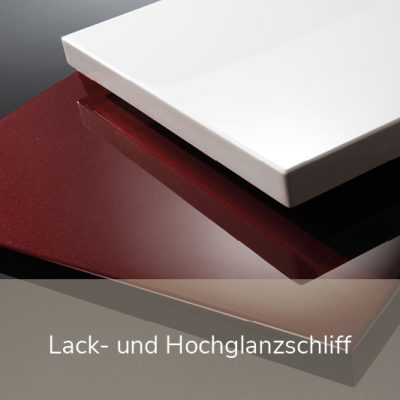

One trend is unmistakable — low application volumes and, if possible, solvent-free stains and paints. For surface finishing, more and more UV paints with a high solids content, water-based paints, waxes and low-solvent stains are therefore being used. Order volumes of well below 10 g/m2 are no longer uncommon today.
Heesemann sanding unit technology takes these developments into account in a future-proof manner:
The elastic pressure bar optimally compensates for tolerances of up to 2 mm in the thickness of a workpiece within a workpiece or between several workpieces without sanding through workpieces.
The frequency-controlled drives of the sanding belts have a wide control range, so that the belt speed can be continuously adjusted to the respective paints and stains.
Thorough sanding belt cleaning effectively prevents sanding marks due to adhering dust.
The combination of transverse and longitudinal strips has still proven effective for high-gloss surfaces. Heesemann uses cross-sanding machines for this purpose, which evenly break down the material even with fine grains and achieve a good surface appearance thanks to the cross sanding. This technology achieves a uniformly flat surface. High-gloss production with machine variant q/l/q/qWhen working with a machine with 3 transverse and 1 longitudinal sanding unit, 3 to 4 passes through the machine are required to process raw MDF up to the finished product, when sanding up to a grain size of 600 or 800. If melamine-coated MDF material is used, the first step could be saved. The particular advantage of a machine with 4 units is that no more than one pass through the machine is necessary between painting processes.
1st run through the machine
If necessary (depending on the thickness tolerance of the raw material), calibrate with an activated calibration guide roller and grain size 120. The transverse units sand in the same run with grains 180 and 240 — this means that the workpiece is calibrated and sanded ready for painting in one run.
2nd pass through the machine
Sanding the applied insulation and filling base, for example with grain sizes 320, 360 and 400, with a sequence of units cross/lengthwise /transverse.
3rd pass through the machine
After applying base coat:
Paint sanding with all 4 units with grits 320 or 360 on the first transverse unit, 400 on the longitudinal sanding unit, 500 on the second transverse sanding unit and 600 on the third transverse sanding unit. For final grain 800, it is recommended to work with 360/400/600/800. If a topcoat is already used as the medium to be polished at this stage, a grain sequence of 600/800/1000/1200 could be used directly before the polishing process.
4th pass through the machine
Depending on the type of topcoat used and the desired final quality, the topcoat could either only be polished or additionally sanded with 1200 and 1500 grits before polishing.